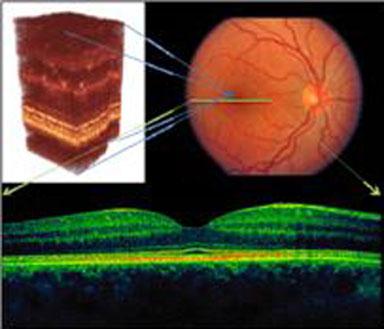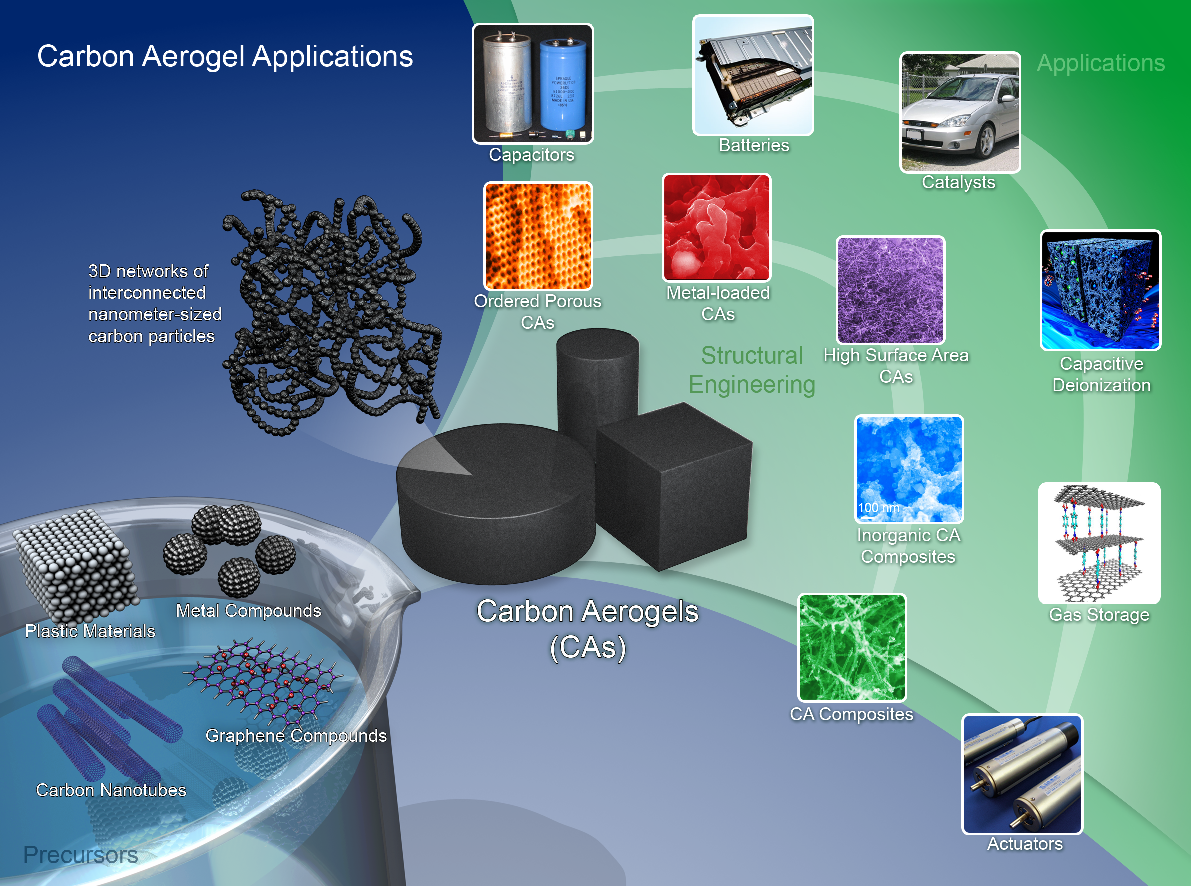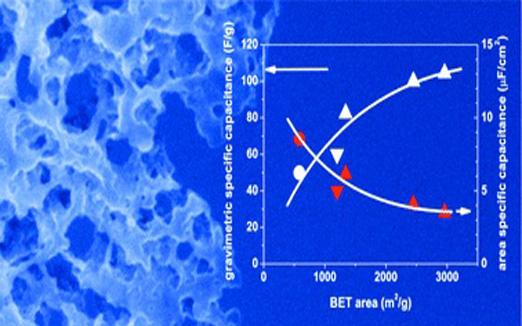Nanomaterials that are emerging out of cutting edge nanotechnology research are a key component for an energy revolution. Carbon-based nanomaterials are ushering in the "new carbon age" with carbon nanotubes, nanoporous carbons, and graphene nanosheets that will prove necessary to provide sustainable energy applications that lessen our dependence on fossil fuels.
Carbon aerogels (CAs) are nanoporous carbons that comprise a particularly significant class of carbon nanomaterials for a variety of sustainable energy applications. CAs are specifically promising in that they possess a tunable three-dimensional hierarchical morphology with ultrafine cell size and an electrically conductive framework. They are available as macroscopic, centimeter-sized monolithic materials.
LLNL is an international leader in breakthrough carbon aerogel research. Carbon aerogels hold great technological promise for a variety of sustainable energy applications including hydrogen and electrical energy storage, desalination, and electrocatalysis.
Aerogels in general constitute a special class of open-cell foams that exhibit such fascinating properties as low mass density, continuous porosity, and high surface area. The CA microstructure typically consists of three-dimensional networks of interconnected nanometer-sized primary particles. Sol-gel methods are used to prepare the materials where the liquid in the gel is removed, leaving the solid matrix intact. In essence, the liquid in the gel is replaced with a gas. This transforms the organic aerogel precursor into a porous carbon network comprised of both amorphous and microcrystalline regions. These materials are mass producible.
As a result, CAs combine the properties of high surface area, electrical conductivity, chemical stability, and environmental compatibility in one material. CAs are specifically promising in that they possess a tunable three-dimensional hierarchical morphology, and that they are available as macroscopic monolithic materials. When doped or modified with other materials to tune their properties, CAs are specifically useful as: carbon nanotube–carbon aerogel (double-and single-walled carbon nanotubes); metal oxide–carbon aerogel or metal carbonitride–carbon aerogel; and as polymer composites of these materials.
Carbon aerogels:
- provide high specific surface areas combined with a fully tunable three-dimensional structure.
- have tunable performance for specific applications by the addition of dopants that can enhance the electrical, thermal, and mechanical properties of the composite material.
- are excellent thermal insulators because their gaseous components greatly reduces heat transfer by conduction, convection, and radiation.
- improve electric double-layer supercapacitors—very low impedance compared to conventional supercapacitors, yet can absorb or produce very high peak currents.
- Energy storage in batteries and supercapacitors are an ideal use of carbon aerogels. Tunable porosities can be used to minimize diffusion resistance while maintaining constant surface area.
- CAs can boost supercapacitors, with values to thousands of farads based on a capacitance of 104 F/g and 77 F/cm3.
- Batteries can use CAs as current collectors or scaffolds for 3D intercalaters.
- Hydrogen generated from water by solar energy, and electric energy from sustainable sources, are anticipated fuels of the future. These technologies incorporate CAs as functional nanomaterials.
- CAs as nanocatalysts can assist in electrocatalysis as electrode materials and by providing catalyst support in proton-exchange-membrane fuel cells.
- CAs offer considerable potential to significantly improve desalination efficiency through a technique known as capacitive deionization. This can increase the world's fresh water supply through capacitive desalination of sea water and brackish water.
- CAs are extremely "black" in the infrared, making them efficient in solar-energy collectors.
U.S. Patent No. 8,685,287 Mechanically robust, electrically conductive ultralow-density carbon nanotube-based aerogels published 04/01/2014.
U.S. Patent No. 9,870,871 Graphene macro-assembly-fullerene composite for electrical energy storage published 01/16/2018
U.S. Patent No. 10,633,255 Graphene macro-assembly-fullerene composite for electrical energy storage published 4/28/2020
Also see a scientific article in Energy Environ. Sci., Biener, et al., 2011, 4, 656.





